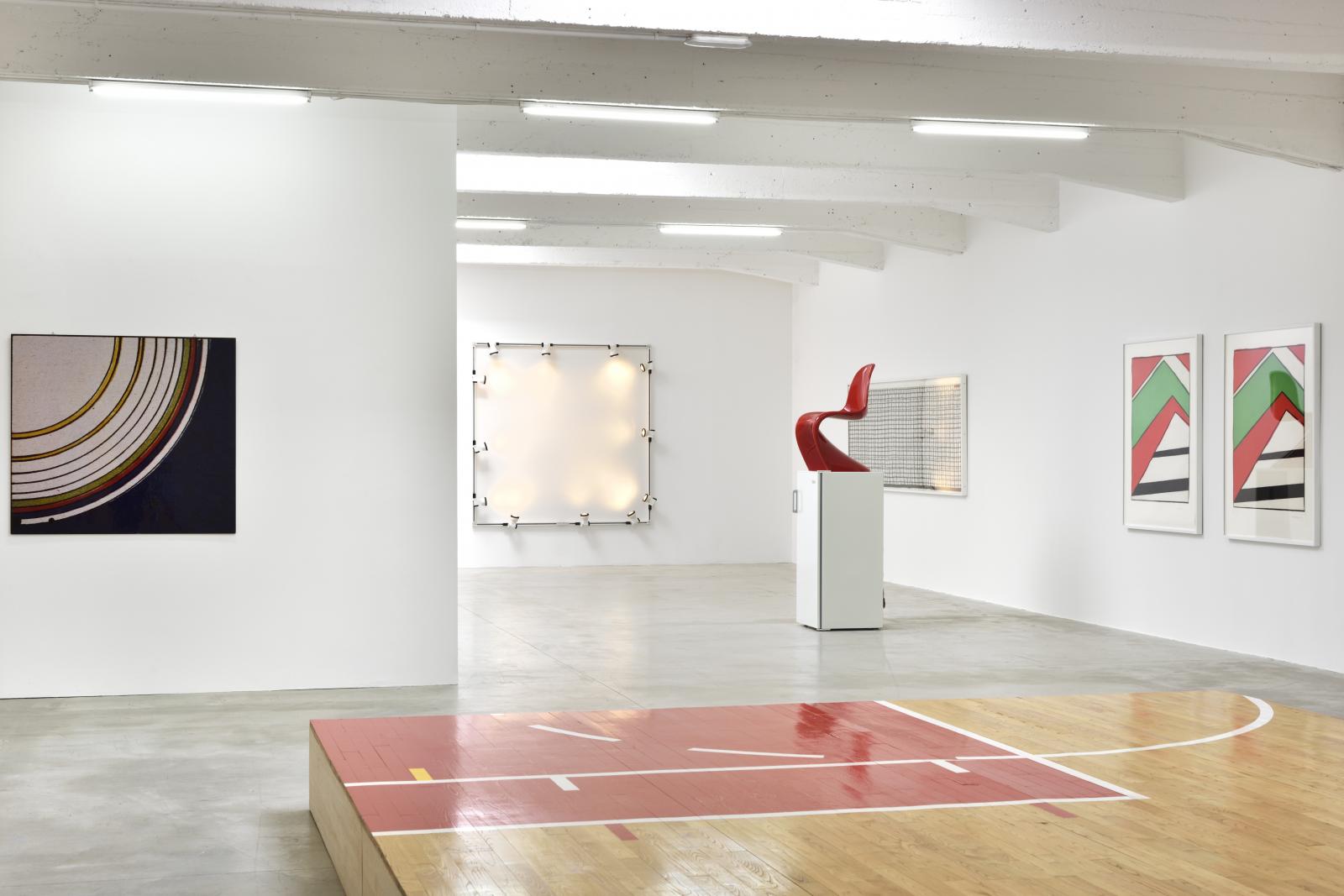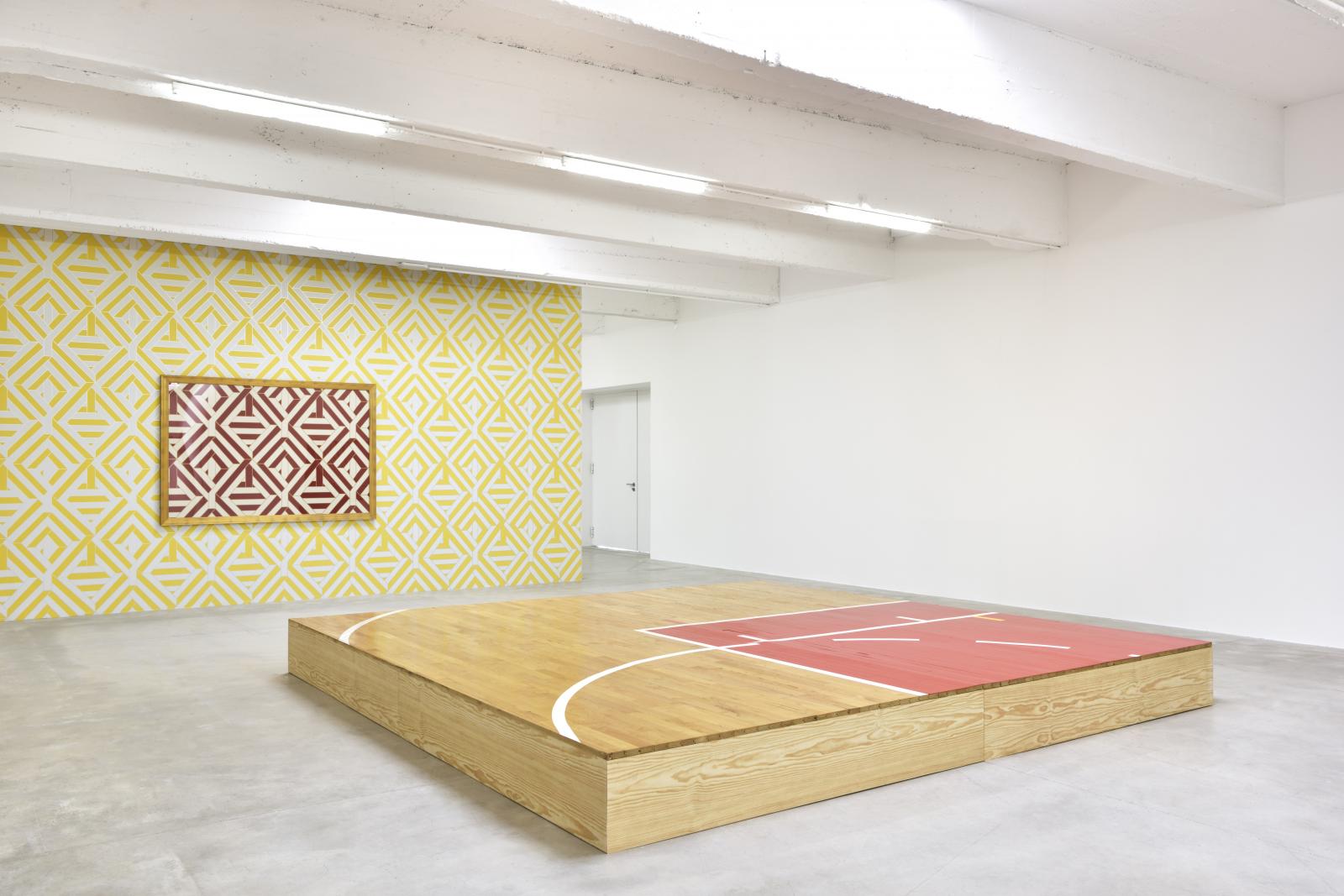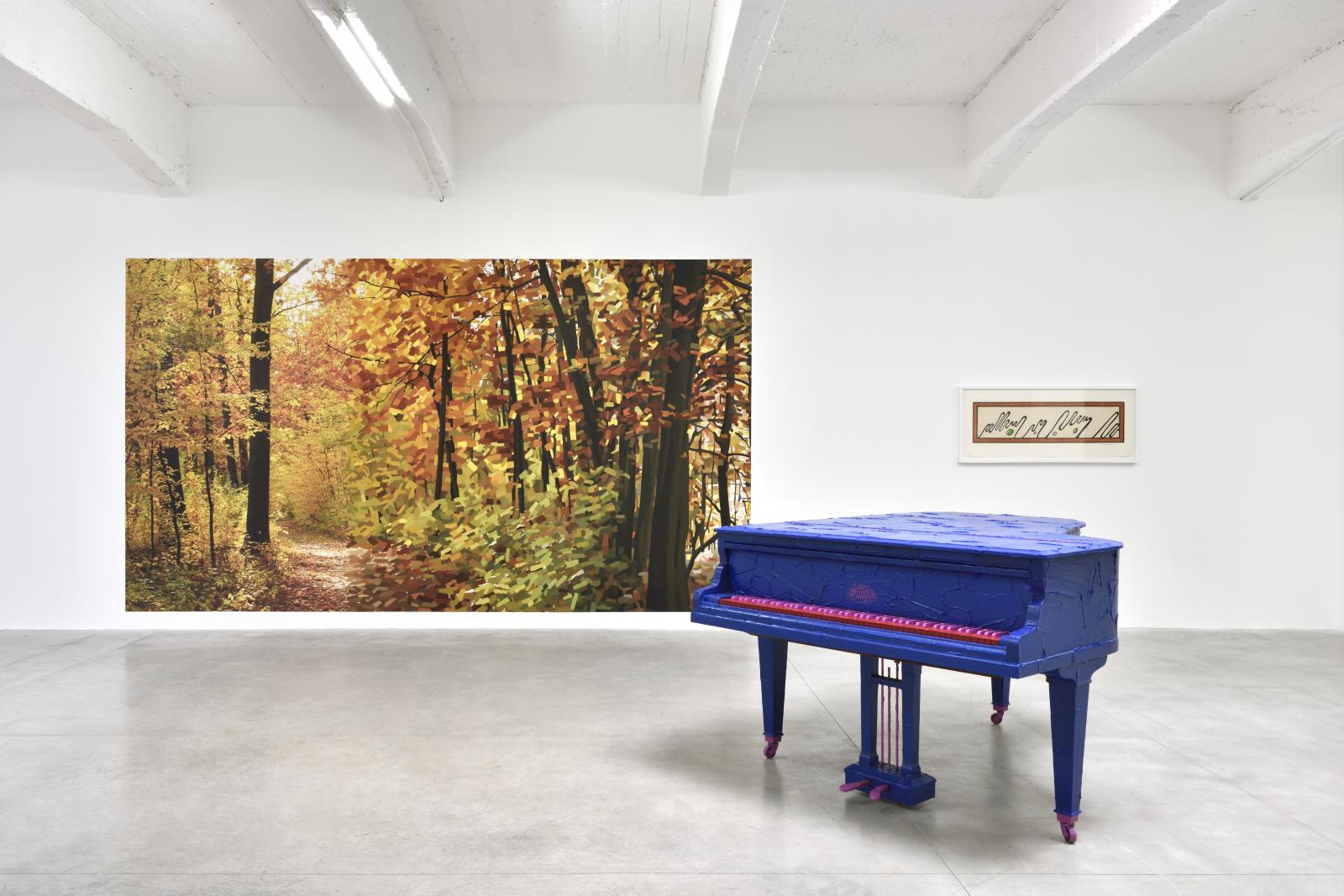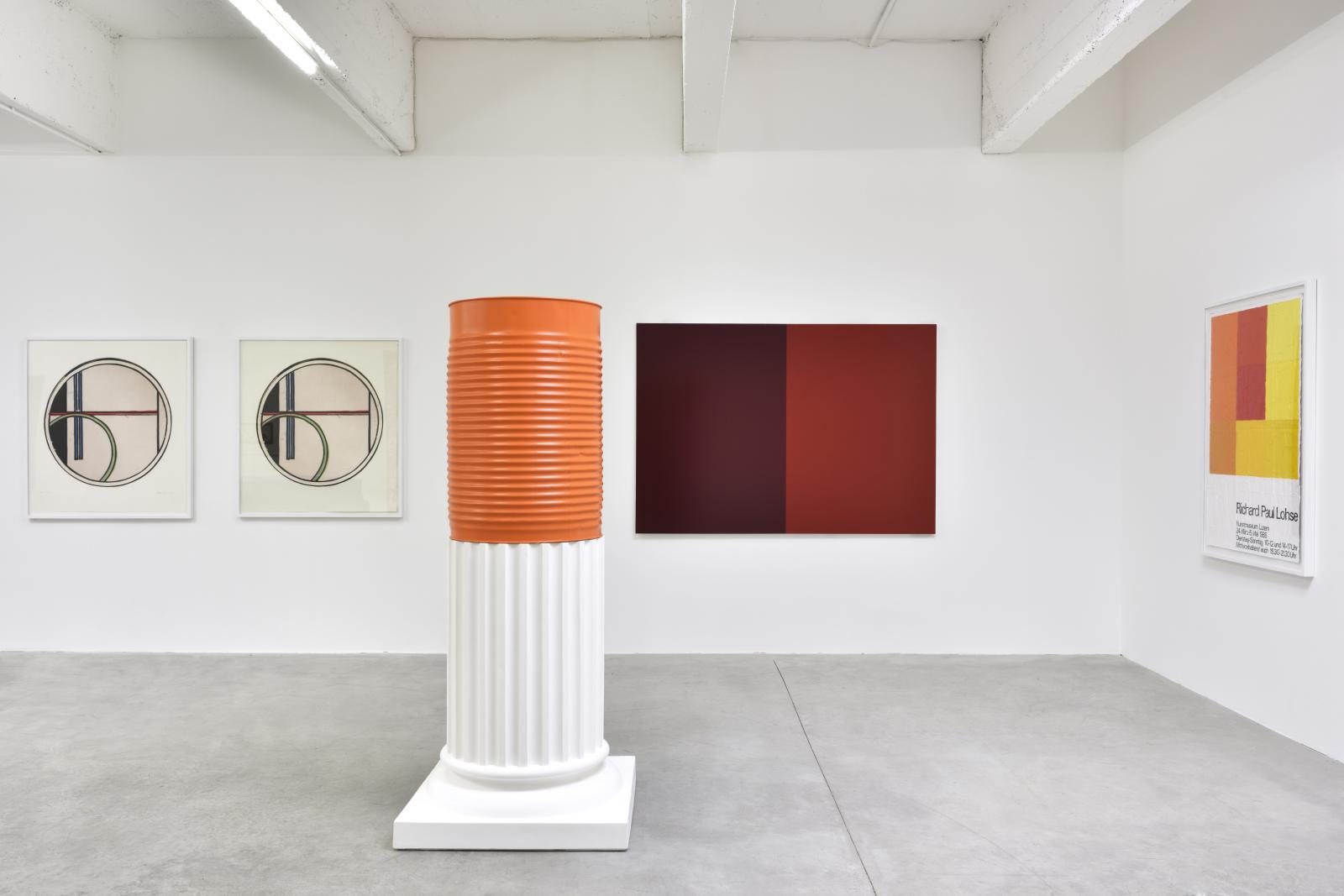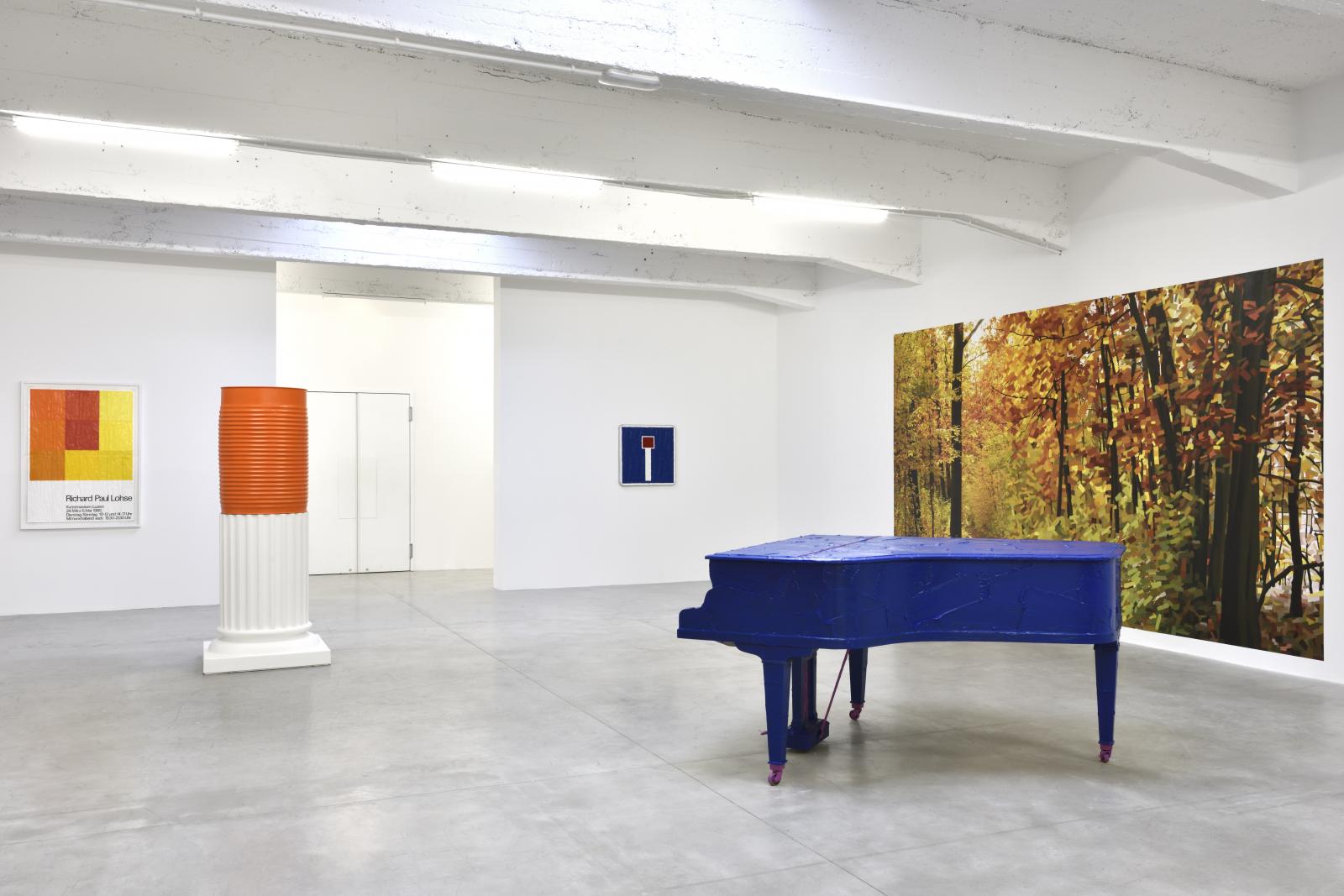Bertrand Lavier
"Unwittingly But Willingly"
Bertrand Lavier (1949, Châtillon-sur-Seine)
The two collections of the FRAC Bourgogne and the Consortium Museum taken together hold the most important group of artworks by Bertrand Lavier in France. Appropriately, through the grouping of about thirty artworks from these two collections and presented at the Consortium Museum from September 17, 2021 to May 22, 2022, Unwittingly But Willingly is an exhibition that takes a closer look back at the artist’s career with a survey of about thirty artworks illustrating each of the artist’s chantiers* from the 1980s until now. From the paint-coated objects through the “stacked pieces” to his Walt Disney Productions, Bertrand Lavier’s work questions our relationship with reality and its representation.
A major presence on the French art scene, Bertrand Lavier (born 1949, Burgundy) was not destined to be an artist. Self-taught, in 1969 he created his first artwork on a vine at the family home, later to be followed by larges series of what he would later call his “chantiers.” In the 1970s, after comparing different hues of the same color sold by two paint brand competitors, Lavier started producing his first poetical reflections on the very concept of painting with works such as Rouge Bordeaux par Novémail et Ripolin (1986) or Rouge de Chine par Corona et Tollens (1983-2000).
Bertrand Lavier’s work operates by unexpected semantic displacements that often humorously juggle with elements of language. In this it follows the theoretical footsteps of Marcel Duchamp’s readymades, where Lavier appropriates this concept while bringing in hybridizations inherited from his training as a horticulturist. This conceptual relocation will later lead to his first “stacked objects” series where appliances and pieces of furniture are associated and placed on top of each other (Panton sur Fagor, 1989). His work thus upends our perception of our immediate environment when confronted with these conceptual displacements created through simple gestures, but also crystallizes fundamental issues within contemporary art history.
With subtlety, these reflections prod the traditional categories that define the work of art. As soon as Lavier started to elaborate his body of work of “painted-over objects” (genuine everyday objects coated by a rough layer of paint that nevertheless respect their original color tones, such as Golden Brot, 1983), the line between painting and sculpture was blurred.
With Bertrand Lavier’s work, issues of framing always come into focus, most notably with artworks such as Lita (1988), an artwork that only exists through a rectangular area defined by the beam cast by spotlights, or Composition rouge, blanche et jaune (1988) where a delineated basketball court composes a new pictorial abstraction.
Another large project explored by Lavier, the Walt Disney Productions, focuses once again on playing with our certainties. With an Appropriationist gesture, the artist transposes into real art pieces the fictional artworks found in an issue of the French Mickey Mouse Magazine and stereotypical of modern art.
Unwittingly But Willingly is an opportunity for an extended significant presentation of an international artist whose local roots are asserted with the artworks from our two collections.
*The artist uses the French word “chantier” which means construction site, and by extension any project or investigation in progress.
